#mediavilla
Text
La Société des Ambianceurs et des Personnes Élégantes, or La SAPE, is a league of extraordinary gentlemen dedicated to an exacting standard of personal style. The Sapeurs follow a strict dress code—the “Code of Sapologie,” which dictates such details as the height of socks, the style of a haircut, the telltale unfastening of a single button on a suit jacket cuff. According to historian Ch. Didier Gondola, Sapeurs carry ivory- or silver-handled walking sticks and wear finely tailored suits, designer colognes, horn-rimmed glasses, silk pocket squares, “J.M. Weston lizardskin loafers… Cartier watches.…”
[…] But these twenty-first-century boulevardiers hail from Brazzaville, capital of the Republic of Congo, and neighboring Kinshasa, capital of the Democratic Republic of the Congo (DRC), two of the poorest and most troubled nations in the world […].
The Sapeurs have adopted—one might say appropriated—European sartorial traditions, not in sycophantic emulation of former colonists, but as an indigenous response to local conditions. In their hands, fine tailoring is a ceremonial costume; high-fashion trademarks become signs of civic ideals and what appears to be a destructive struggle for status is in fact a choreographed dance, symbolizing a peaceful competition for social esteem and expressing a critique of a society plagued by endemic violence and poisoned by oppression and corruption […].
Brazzaville Sapeurs tend to be more classical in their attire, while the Kinois of Kinshasa favor bolder colors and more eccentric styles, a difference historians attribute to a two-decades-long ban on Western attire in Kinshasa during the 1970s and 1980s. During the early 1970s, Zaire’s president, Mobutu Sese Seko, imposed a series of cultural reforms known as the retour a l’authenticite (return to authenticity) designed to rid the nation of European influences.
[…] The abacost, along with thick horn-rimmed glasses, and leopard-print fez, or toque, became a personal signature for Mobutu, who controlled Zaire until 1997, when he was forced to flee following a civil war—but only after siphoning billions of dollars from the national economy as his people starved. Ironically the abacost, designed to unify the nation and level social distinctions, became an international symbol of the corrupt post-colonial autocrat.
[…] The Code of Sapologie is both a demanding dress code and a demanding ethical code: according to Spanish photographer Héctor Mediavilla, who has studied and photographed the Sapeurs since 2003, “a sapeur is, by definition a non-violent person, despite the three civil wars that have taken place since… independence. They stand for an exquisite morality… as they say, ‘there can only be Sape when there is peace.’ Their motto became ‘Let’s drop the weapons, let us work and dress elegantly.’ ” The Sapeurs deliberately refigure the physical violence that has scarred their nation for generations into a sartorial contestation: they stage “fights” in which “rival sapeurs will do battle with each other, flashing label after label, trying to best their opponents, stripping down, if necessary, to their underwear.” According to Mediavilla, “It’s combat, and the clothes are the weapons.” Like the zoot-suited pachuco, the Sapeur uses the fantasy of fashion to imagine an alternative social order in which elegance and style replace corruption and violence. The Sapeurs find dignity, hope, and joy in grim circumstances.
#book : dress code#fashion#congo#brazzaville#kinshasa#sapologie#1970s#1980s#20th century#hector mediavilla#21st century#2000s
0 notes
Text
Adán y Eva expulsados del Paraíso (Capilla de los Benavente, Medina del Rioseco)
Adán y Eva expulsados del paraíso. Capilla de los Benavente. Iglesia de Santa María de Mediavilla. Medina del Rioseco. Valladolid.
Conocida como la «Capilla Sixtina de Valladolid» por su decoración, una de las más singulares de la arquitectura religiosa castellana del siglo XVI, fue mandada construir por el cambista Álvaro de Benavente al arquitecto Juan del Corral y a su hermano, el escultor…

View On WordPress
#Álvaro de Benavente#Capilla de los Benavente#Escultura#España#Francisco Martínez#Iglesia de Santa María de Mediavilla#Jerónimo del Corral#Juan de Juni#Juan del Corral#Medina del Rioseco#Renacimiento#Siglo XVI#Valladolid
1 note
·
View note
Text
Nuria Labari: De la clase social a la “clase psiquiátrica”
“La salud mental se está convirtiendo en un nuevo elemento de estratificación social, que ya es capaz de distinguir a quienes están integrados socialmente de los que no. No es ninguna exageración.”
Artículos Relacionados

View On WordPress
0 notes
Text
The fantasy in modern Arthuriana (3)
A follow-up of the previous post.

If the medieval Arthurian literature accumulates the tales of the feats of the heroes, the detail of their thoughts is mostly left in the shadows. Like the prose of Malory says for a good number of knights, “He said but little”, “He seyde but lytyll”. In other words, the Arthurian romance of the Middle-Ages is concerned with actions, not words. It is even truer when it comes to the female characters, a minority among the Arthurian adventures, and who are limited to a specific set of roles: queen and giver of goods (Guinevere), virgin and emissary of adventure (Linette), sad and dying lover (the lady of Escalot)… Such a restriction of functions invited in itself a fleshing out of the characters, not to say a remake. It is even stronger when we come to the sorceresses, another type of women largely used by modern rewrites, probably because they are precisely among the female characters the only one who, in the Middle-Ages, can freely participate to the action. [It is true that the maidens who guide the knights throughout their quests seem to also have an important area of action, but very often it is suggested that they belong to the supernatural world. In the Morte Darthur, the three ladies met by Gawain, Yvain and Marhalt embody the three ages of woman; Linette, who guides Gareth and helps him in his love, is able to “piece back together” and resurrect a dead knight].
If the revisited Arthurian literature likes to give a voice to women, these characters so often overshadowed by their male counterparts who are always in a war or on a quest, it is probably because at first it was an innovation. Since everything was already said in the past, one of the simplest ways to renew the tale is to give a voice to the mutes, here women. This innovation was very quickly assimilated to a feminist, though not always feminine, current, under the major influence of Marion Zimmer Bradley and her “Mists of Avalon”. In it the focus is placed on the enchantresses, Viviane and Morgan mainly. Given the huge success of these novels, the characters within it had a tendency to influence, consciously or not, ulterior treatments of the Arthurian fiction and its female characters. As such, when Cindy Mediavilla wrote about “The Mists of Avalon”, she said “[it] sets the standard for Arthurian fiction told from the female perspective. Heavy with images of the Goddess versus the male dominance of Christianity, this story (…) is highly recommended for all fans of the genre, especially young feminists seeking alternate renderings of the legend.” (Arthurian Fiction – An Annotated Bibliography). Outside of this “feminist” dimension, there is still a great number of recurring trends discernable within contemporary novels that have a direct influence over the idea of magic, and by extension, the genre or sub-genre to which the Arthurian novel belongs. [Maureen Fries heavily nuanced the feminism at work here: Viviane is killed by Balin, Nimue killed herself after betraying Kevin, Niniane is used then killed by Mordred, Morgan ens up admitting the universality of religious symbols even assimilated the Great Goddess to the Virgin Mary… “Indeed, real empowerment escape all of the women in the book except perhaps (and indirectly) Gwenhwyfar, whose narrow Christianity Arthur embraces.” – “Trends in the Modern Arthurian Novel”, in “King Arthur Through the Ages”]
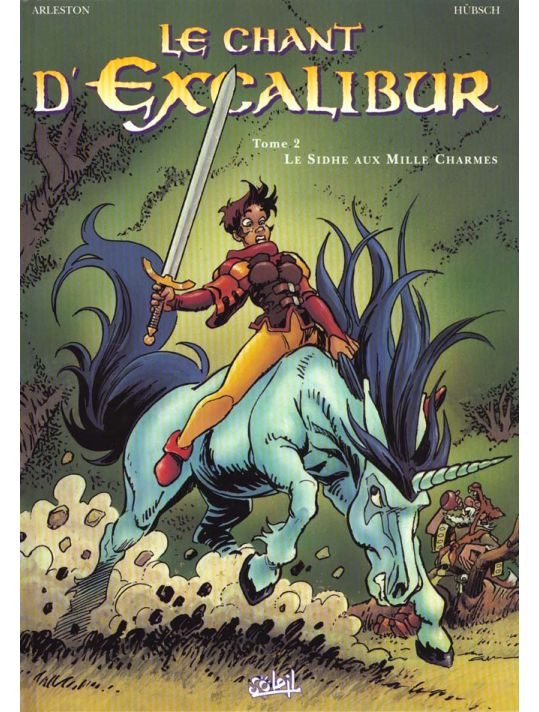
The duo Viviane/Morgan is most often treated as an antagonism. In line with the sources, Viviane appears as a kind fairy who raises Lancelot and acts to help Arthur dispel the schemes of his malevolent half-sister. [With a rare set of exceptions, including Fred T. Saberhagen’s Dominion which subverts many preconceptions by making Viviane a bloodthirsty high-priestess and Merlin a drunkard with a failing magic, closer to the buffoon that appears in the BD “Le chant d’Excalibur” by Arleston and Hübsch than to the medieval prophet] But the shadows among the medieval characters are enough to allow anyone to interpret them in various ways. Indeed, this sweet Lady of the Lake is also the woman that used Merlin to augment her own power before imprisoning him for all of eternity. And Morgan is at the same time the enemy of the Round Table and the crying sister which takes a dying Arthur in her arms to carry him away to Avalon. This ambiguity is complexified by numerous possible divisions or assimilations: Viviane is also Niniane or Nimue, except when they are all different characters. Mordred is either the son of Morgan, or of her sister Morgause. The sources vary a lot about these facts, and so do the modern authors – and the same thing applies to the love-romances that are woven between the enchantresses and their victims, between Merlin and his students. [Within the “Lancelot-Graal”, Morgan is said to have been the student of Merlin, but she is different from Viviane, another of his student who ended up imprisoning the wizard. Yet, there is a temptation to synthetize in one character the student, the mistress and the enemy. On another subject, the hatred of Morgan for the Round Table could be explained by her love for the cousin of the queen, a love that said queen managed to destroy. As early as the Middle-Ages we see the beginning of, not a rehabilitation, but at least excusing circumstances for Morgan’s criminal behavior towards her brother and his kingdom.]
The opposition of benevolent sorceresses and malevolent wizardesses is inscribed in a broader way within a specific conception of magic. If we can easily admit that there are things such as “white” or “black” magic, if we admit that there are wizards opposing witches (or necromancers), than this duality invokes the symbolism of good versus evil. In the context of the Arthurian legend, the magic that serves Arthur and his chivalrous ideal is supposed to be white, while the one of those that stand against him is black. It is the case with Stephen Lawhead or Gillian Bradshaw, where the future of the world depends on a battle between Light and Darkness. [Gillian Bradshaw created “Hawk of May” and “Kingdom of Summer”. The expression “Kingdom of Summer” is also very present within Lawhead’s work, reinforcing the link between those two authors. Lawhead prefers to name two of his characters Gwalcmai and Gwalchavad, “hawk of May” and “hawk of Summer”, rather than Gawain and Galahad. As for the opposition of the Light and the Darkness, we can be reminded of the two sides of the Force within “Star Wars”, which is filled with Arthurian references.]
But this symbolism also evokes several moral values that already prepare the question of how magic and religion coexist. Already in the Middle-Ages the limits are blurry when it comes to separating magic, religion, and science – especially medical science. (See Richard Kieckheffer’s Magic in the Middle-Ages) The knowledge of plants can be seen with suspicions, and the various invocations look very similar to each other, no matter if they are for a saint or a demon. All those contradictions coexist within the modern Arthurian literature as a whole, even though if most authors take care to establish a cohesive magic system within the setting of their tale.
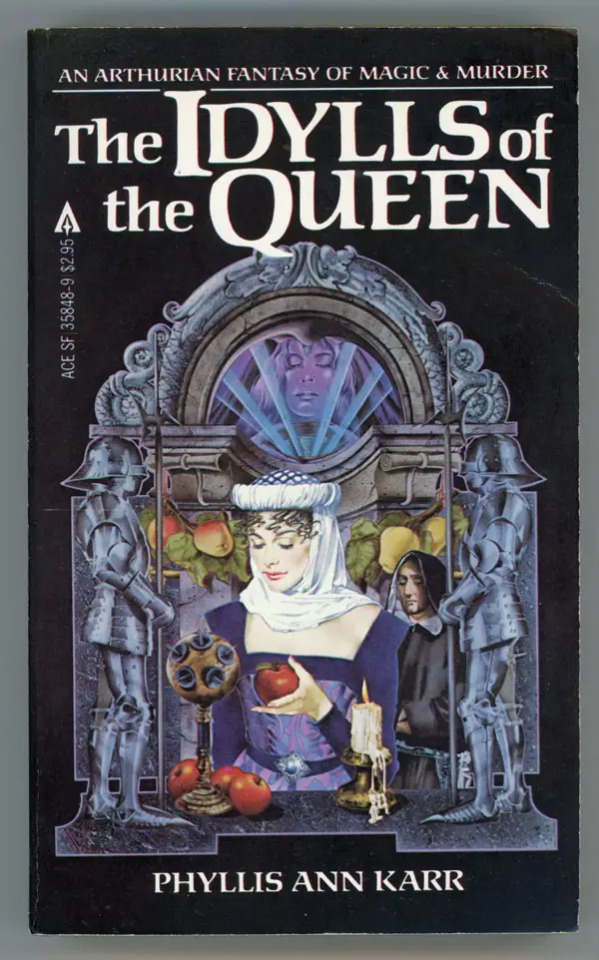
As such we frequently have an opposition between magic and religion, where magic relies on nature and traditional beliefs of which women are the bearers, while religion relies on a recent importation of Christianism and is presented as repressive and misogynistic. It is the case in Marion Zimmer Bradley’s work, where the magic is natural, “sympathetic”, against fanatical Christians who only dream of absolute power. Bernard Cornwell depicts a desacralized Christianity in an even darker light, as a religion only concerned with accumulating wealth by exploiting naïve pilgrims. The prayers are emphatic but useless, and the priest Samson, a future saint, has a rat-like face, a strong dislike of Guinevere and Nimue, as well as a heavily hinted preference for very young monks. The only Christian that is acceptable to the eyes of the narrator is the bishop Bedwin, who turns out to not be a quite faithful Christian, and an emblematic example of the improbable reconciliation of the extremes within modern Arthurians – a treatment of magic an religion that prefers the opposition of forces rather than their complementary. It forms indeed an explosive situation that is able to captivate more the attention of a reader rather than an idyllic statu quo. As such, what imposed itself as an Arthurian topos is the idea of a mostly pagan Britain attacked by the hegemonic projects of Christianism – despite the historical and archeological informations contraicting this view. The historicizing of the Arthurian setting is thus sometimes independent from the story, while not negating its realism or “vraisemblance”. [Adam Roberts, in “Silk and Potatoes” pointed out that in Lawhead’s work the Briton peasants are wearing silk, which is highly improbable, and that they cook with potatoes, an obvious anachronism.]
Stephen Lawhead tries to have a pacific shift from the old religion and its beliefs (assimilated to magic) to the Christian religion of the God of love. Taliesin, then Merlin, both have a revelation of the unicity of the divine, and as such their bardic invocations are now addressed to the Father, the Son and the Holy Spirit, but they stay unchanged in language or effect. What was once a spell or a trick becomes a miracle. Lawhead’s tale however is flawed by an oversimplification. If all this “magic” comes from God, then where do Morgian’s wicked powers come from? The unbreakable faith of Merlin within the superiority of God over Satan is admirable in a catechism context, but it removes an essential tool of the tale: its suspense. A duel between Morgian and Merlin during which the latter won’t suffer any blow, protected as he is by the armor of his faith, is quite disappointing, not to say boring. And what about the magic of the Small Folks, which seems to need a technical learning? The tale cannot fully escape a certain number of expectations, such as the oppositions between white and black magic, or between paganism and Christianity, or the presence of another “fairy”-like people cohabiting discreetly with the Britons. As such, while the attempt at Christianizing the supernatural is interesting because quite rare today (though it was very common in the Middle-Ages), is works badly.

It is a testimony of the weight of obligatory elements within the modern Arthurian fiction, a fiction that was shaped as much by contemporary successes as by, if not more than, its relationship to the medieval sources. If the articulation between magic and religion can be done in various ways, it stays in many cases a strong opposition between white magic/women/tradition, and religion/men/change. And since, outside of Merlin, most of the wizards of the medieval romances are women, magic is thus colored by femaleness, not to say feminism. In a world where male characters kill each other with weapons, women heal wounds with herbs and words. The image of the healer-Viviane, sweet and motherly, is opposed to the brutality of a world of warriors. At another level, it seems that the sorceresses embody the “fantasy temptation” while the warriors embody the “historical temptation”. [Raymond H. Thompson notes the gendered polarity within Arthurian rewrites since WWII, between a feminine movement closer to heroic fantasy, and a male movement, bloodier and closer to sword and sorcery (“Arthurian Legend in Science-Fiction and Fantasy”, in “King Arthur Through the Ages”)] As such, the novels that focus on the female characters also focus on magic, while those concerned with men and their wars are historicizing the Arthurian era. As Thomson said: “The focus thus shifts from warfare to the political and domestic conflicts that raise Arthur to power, and then destroy him.”
But if this is the case, where do we place evil wizardesses such as Morgan? They find their place within the rewrites that use abundantly of the supernatural, which is then vast enough to include both good and evil. Moreso, if the Middle-Ages offered a complex depiction of the enchantresses, the dark side of Morgane/Morgause stays dominant. Modern rewrites thus very easily use this malevolent aspect. It is the case of T.H. White whose second book, “The Witch in the Wood” was later renamed “The Queen of Air and Darkness” to designate Morgause. Gillian Bradshaw also depicts a fully evil Morgause who tries to teach her son Gwalchmai the occult arts. But he prefers the side of Light, and he joins Arthur and his knights. We find these two influences within Lawhead’s Morgian, also qualified of “Queen of Air and Darkness”, and who serves the Devil while Merlin fights by the sides of Arthur, the champion of Light. This distribution of the magical forces intensifies the motif of the conflict on several levels. The Darkness can be historical: the one of the “Dark Ages” at the beginning of the Middle-Ages, the one of the various disasters (war, plague, famine, insecurity) brought by the Saxon invader. But in a cyclical point of view, which extends the mythical side of the Arthurian theme even in rewrites that try to be historical, the fight between Good and Evil becomes recurrent. Arthur and Morgan (or her avatars) are easily identifiable archetypes. This repetition ability highlights the non-temporality of the myth and justifies the growing number of Arthurian rewrites: the myth is eternal, and thus must be eternally retold.
But these retellings do not simply replay the classical gigantic fight between the servants of the Light and those of the Darkness. A quite important number of modern authors chose to rehabilitate the unloved characters, mostly by giving them a voice. As such, the grudge-bearing, jealous witch of the medieval romances disappears, replaced by a loving and healing sister. Phyllis Ann Karr, within “The Idylls of the Queen”, offers a clever treatment of the character of Morgan, rehabilitated by a systematical refutation of the rumors, those that will become the “official” version of the legend later on. Morgan recognizes the facts, but offers other explanations for them, motivations misunderstood by her contemporaries and thus doomed to stay unknown (until the modern author reveals them, of course). This modern process of subverting the medieval stereotype (here the wicked witch that becomes the most faithful and loving servant of the Arthurian grandeur, pushing the devotion to a refusal to be offended by her bad reputation) can be declined in an infinite way, even on a parodic tone. Thomas Berger offers an anemic Galahad barely able to ride a horse, instead of the invulnerable knight supposed to be an “improved” version of his father Lancelot. John Gloag paints a Merlin prone to mistakes within his prophecies, and makes the entire announced and expected Arthurian glory a huge prank. T.H. White made his Lancelot ugly, where the Middle-Ages encouraged to see him as beautiful since he was “the perfect lover”.
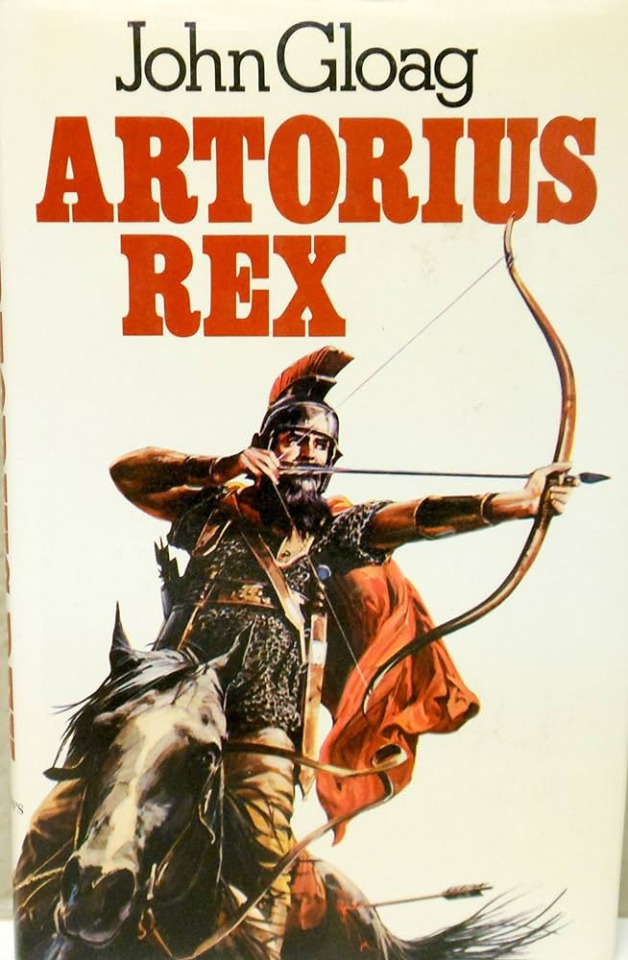
However, as with all process, this technique has its limits. By constantly subverting the reader’s expectations, we create new demands. Morgan is constantly rehabilitated, Lancelot is constantly made darker or disgraced by modern authors, who are numerous (maybe too numerous?) in trying to set themselves apart from their predecessors. Cornwell’s Lancelot is an arrogant coward, while in other novels he simply disappears as the lover of the queen and/or the right arm of Arthur. He is replaced by characters deemed more historical (Bedwyr for Rosemary Sutcliff or Joan Wolff), or by characters invented for the plot (John Gloag’s Wencla, Victor Canning’s Borio). As if suppressing the greatest Arthurian knight was needed to surprise the modern reader. Under such a light, the rehabilitation of witches as misunderstood sorceresses is almost becoming more stereotypical than the original model of the “truly wicked”.
It seems that, for now, the only true novelty that modern authors have not dared is an Arthurian novel without Arthur. But this path seems to be under exploration: Arto, Artos, Artorius, all spellings that can establish a difference with the original character is welcome, especially if it establishes a gap between the foggy and uncertain time when the legend was born and the era of the modern rewrite. The exploitation of the Arthurian prehistory is another sign of it. The Arthurian novel without supernatural is also another facet of this quest for a renewal. But since the “pure” historical novel has already been done in the past, the “new novelty” is the reintroduction of the marvelous – not in its original form, but in a subtler one influenced by the past historicizing. We entered an era of “rationalizing” and “walling” of the “merveilleux”. Rationalizing the wonderful means exploiting events and actions that can be given the appearance of magic ; “walling” the marvelous means limiting magical abilities to a specific group of characters, usually non-humans and thus marginalized.
#fantasy#arthuriana#arthurian novels#arthurian literature#viviane#lady of the lake#morgane#morgan le fay#magic#magic system#fantasy novels#fantasy worldbuilding#magic vs religion#merlin#nimue#morgause#lancelot
23 notes
·
View notes
Text
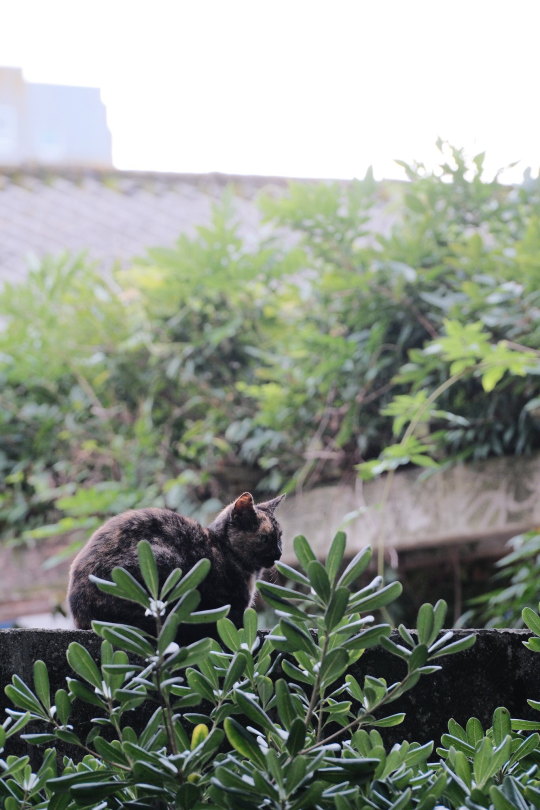

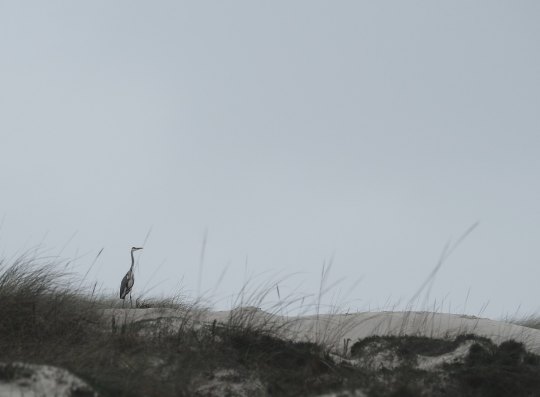
(1) (2) (3) by Pablo Mediavilla
Via Flickr:
(1) Hidden kitten. Fujifilm X-T5 con xf70-300mm en el parque de Santa Margarita.
(2) Chloris chloris in Area Maior lake.
(3) Ardea cinerea watching from the sand dune.
3 notes
·
View notes
Photo




Artesonado mudéxar da Catedral de Santa María de Mediavilla de Teruel
13 notes
·
View notes
Text


Jose luis mediavilla= jonh lennon


Raul llorens= paul mccartney


Oscar muñoz= George Harrison


Jose Javier Serrano= Ringo star
El doblaje español castellano de a harsh day night
0 notes
Text
Nuevos barrios y más ayudas para vivir mejor en Madrid
Una oportunidad para adentrarse en los retos, estrategias y propuestas de las instituciones y agentes implicados en los planes urbanísticos y proyectos
Por Deyanira Vázquez | Reportera
Este lunes, la cita comenzará a las 10.00 horas con la presentación del editor de los grupos Madridiario y Diariocritico, Constantino Mediavilla. Acto seguido, Sigfrido Herráez, decano del Colegio de Arquitectos de…

View On WordPress
0 notes
Text
El venerable Ruzola. Calatayud 1599 – Viena 1630
El venerable Ruzola. Calatayud 1599 – Viena 1630.
El Centro de Estudios Bilbilitanos nos invita a la presentación de su libro nº 171: El venerable Ruzola. Calatayud 1599 – Viena 1630, obra de Fidel Sebastián Mediavilla.
Se trata de una publicación necesaria e imprescindible para conocer con mayor profundidad la figura del bilbilitano fray Domingo de Jesús María Ruzola, más conocido como venerable Ruzola.
Gracias al trabajo realizado por su…

View On WordPress
0 notes
Text

Dirección y reparto
Dirección: Rubén SánchezReparto: Pablo Scapigliati, Marina Pinto, Natalia Bertran, Dafnis Balduz, Georgina Aragall, Oriol Ramis, Jan Mediavilla, Luis Anyó, Alex Llopis, Albert Amat, Adrián Rodríguez, Natalia Gallardo
0 notes
Text
Mediavilla, on Lombards Sentences and Demonology! 1477
957G
A generic portrait of Richardus de media villa, woodcut from the Nuremberg Chronicle
Richard [Middleton], d. 1302/3
Commentum super quartem Sententarium..
Venice: Christophorus Arnoldus, [circa 1476-7] $22,000
THE WEBSITE LINK
Folio 12 1⁄4 9 1⁄4 inches. a-z10 [et]10 [cum]10 [per]10 A 10 B-D8 (D8v blank and aa1r blank) aa8 bb10 cc8 {320 leaves
Second edition. This copy is rubricated…

View On WordPress
1 note
·
View note
Text
La capilla de los Benavente en Medina del Rioseco
Se trata de la capilla situada en la Iglesia de Santa María de Mediavilla de Medina del Rioseco.
Más aquí.
youtube
View On WordPress
#Capilla de los Benavente#España#Iglesia de Santa María de Mediavilla#Medina del Rioseco#Valladolid#Youtube
0 notes
Text
Ver "No Te Detengas de Walt Whitman por Pepe Mediavilla" en YouTube
youtube
0 notes
Video
vimeo
'For Hemma' from Mar del Corral on Vimeo.
An idea by Cristian González,
directed by Mar del Corral.
Choreographer & Executive producer: Cristian González
Choreography Assistants: Irene Rodríguez and Alicia López
Starring:
Irene Rodríguez
Alicia López
Cristy Cortez
Iria Barona
Andrea El Ameri
Noelia Trijueque
Mj Mínguez
Marina Richart
Eva Martínez
Montse Sotoca
Sara Delgado
Sharay Santano
Lydia Rioboo
Asia Zonta
Silvia Nieto
Ángela Del Pino
Production Company - Tho Films
Producer - Sofía de Palacio
Song - Hemma by Surma
DOP - Adri del Val
Editor -Paula M. Ferro
Colourist -Ruth Wardell
Colour Producer - Oscar Wendt
Graphic Designer Tasio
Art Director - Kori Chan
Stylist - Evë Lunas
Make Up Artists - Lau Pérez & Patri del Moral
Hair Stylists - Rosa María Simón & Yolanda Parrilla Orozco
Sound Designer - Nacho Roca
1st AD - Sofía de Palacio
Steadycam Operator - David Sevilla
1st AC - Paolo Sciré
2nd AC - Begoña F. Velasco
Gaffer - David Gómez Herradón
Sparks 1 - Pablo Romero de Armas
Sparks 2 - Desi Hitos
Production Manager - Orencio Carvajal
Production Assistant - Ingrid Schroth
Production Assistant - Omar Alcaide
Location Manager - Nano Montero Palacio
Making Of Director - Isa Botello
Still Photography - Sam Sánchez
Rehearsals Photographer - Danilo Moroni
Proposal Designer - Itxasai Mediavilla
SPECIAL THANKS:
Electric Theatre Collective
Switch ON Madrid & Laura García
Nau Community Dance & Noemí Cabrera
Carmen Hernández
I.C.O.N.
Kryolan Professional Make Up
Taoplus Localizaciones
GECISA
Lenso Films Services
Sara Hernández
Who Estudio
Jorge, Micho & Nacho.
Borja García
Ibon Esparza
0 notes
Text


A Coruña (2) by Pablo Mediavilla
Via Flickr:
(1) Raven over the sea, Parque de Bens.
(2) A sunny normal day between storms with the Fujifilm X-T5 and the xf18-55mm f2 8-4.
2 notes
·
View notes
Text

This model was designed by Alex Doskey using Great Stella. It was then exported to VRML format, which was used to build the physical model in a ZCorp stereolithograph machine. The model is only about 6 inches across, and has all regular non-intersecting faces.
Models by Adam Stolicki
Models by Adam Stolicki
Model by Adam Stolicki Model by Adam Stolicki Models by Adam Stolicki
Model by Adam Stolicki Model by Adam Stolicki Models by Adam Stolicki
Models by Giacomo Artoni
Hollow spherical model Stellation of Small Icosihemidodecahedron Stellation of Snub Cube Stellation of Great Dodecahemidodecahedron
Hollow spherical model
designed using this tutorial Compound of 6 Dodecahedra Stellation of Small Stellated
Truncated Dodecahedron Compound of 5 Octahedra
Models by Richard Stratton
Stellation of Great Ditrigonal Dodecicosidodecahedron Stellation of Small Icosihemidodecahedron Stellation of Snub Cube Stellation of Great Dodecahemidodecahedron
Stellation of Great Ditrigonal
Dodecicosidodecahedron Stellation of Small
Icosihemidodecahedron Stellation of Snub Cube Stellation of Great
Dodecahemidodecahedron
Models by Marc Picquendar
Stellation of Rhombic Triacontahedron Stellation of Rhombic Triacontahedron Small Snub Icosicosidodecahedron
Stellation of Rhombic Triacontahedron Final Stellation of Rhombic
Triacontahedron Small Snub
Icosicosidodecahedron
Compound of 5 Cubes Stellation of Truncated Octahedron Pentagonal Hexecontahedron Pentagonal Icositetrahedron
Compound of 5 Cubes Stellation of Truncated
Octahedron Pentagonal
Hexecontahedron Pentagonal
Icositetrahedron
Models by Robert Rech
Stellation of Great Ditrigonal Dodecicosidodecahedron Stellation of Small Icosihemidodecahedron
Stellation of Strombic Icositetrahedron Stellation of Triakisoctahedron
Models by Linda Zurich
Stellation of Cubitruncated Cuboctahedron Another stellation Stellation of Icosahedron Another stellation
Stellation of Cubitruncated
Cuboctahedron Another stellation Stellation of Icosahedron Another stellation
Models by Karlos Alonso Mediavilla
Compound of 5 Tetrahedra Compound of 3 Cubes Faceted Cube Compound of Dodecahedron and Great Dodecahedron
Compound of 5 Tetrahedra Compound of 3 Cubes Faceted Cube Compound of Dodecahedron
and Great Dodecahedron
Models by Steve Waterman
Waterman polyhedra
The first ten Waterman polyhedra in each of the three types available in Great Stella.
Models by Michael Barltrop
Compound of 15 Cuboids Compound of 4 Cubes Stellation of the Small Dodecahemicosahedron
Compound of 15 Cuboids Compound of 4 Cubes Stellation of the Small Dodecahemicosahedron
Monoacral stellation of Compound of 15 Cuboids Stellation of Small Dodecahemicosahedron Stellation of Great Dodecahemicosahedron
Monoacral stellation of
Compound of 15 Cuboids Stellation of Small Dodecahemicosahedron Stellation of Great Dodecahemicosahedron
A stellation Stellation of Small Stellated Truncated Dodecahedron
Stellation of the first Faceted
Rhombicosidodecahedron found in
Stella's Library Stellation of Small Stellated
Truncated Dodecahedron
Models by Keith Davison
See also: What people have to say about Stella.
0 notes